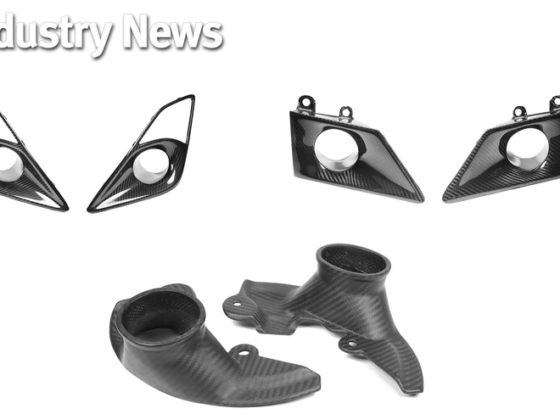,
 A new little modification I have added is more foam strips which were leftovers from my prior radiator sealing efforts to seal off the gap between the hood and the chassis. This should force more air through the radiator and more air towards the snorkel of the air box when the stock hood is in place.
A new little modification I have added is more foam strips which were leftovers from my prior radiator sealing efforts to seal off the gap between the hood and the chassis. This should force more air through the radiator and more air towards the snorkel of the air box when the stock hood is in place. In the stock configuration, the air feeding the air box comes from this little slot. The air enters the front of the car through the main bumper opening, makes a 90 degree turn up, and then another arching 90 degree turn towards the snorkel.
In the stock configuration, the air feeding the air box comes from this little slot. The air enters the front of the car through the main bumper opening, makes a 90 degree turn up, and then another arching 90 degree turn towards the snorkel. 
The maximum speed I hit on the straight was 130mph before I wussed out and slowed down to 115mph for Turn 2. I compared the data from the top of fifth gear however which is around 125mph. Some interesting stuff showed up along with some unanticipated improvements.

At 7000rpm and 110mph, the difference is about 750Pa. As the engine and vehicle speed increased to almost 8000rpm and 125mph, the increase in pressure was about 1000Pa (give or take). Looking back at the graph of stagnation pressure vs. speed, 110mph should have gotten us about 1500Pa and 125mph should have generated about 2000Pa. So I’m getting a gain that’s about half of of the maximum predicted, but that’s with no attempts at all of sealing the air box more than the way it left the factory. My guess is the major leak point is where the two halves of the air box close around the intake tube. Maybe I’ll lay a bead of RTV around there to try to seal the box better.


I got a solid 7-8 deg C, or about 13-14 deg F reduction in intake manifold temperature. That’s a lot! So why was the intake air so much cooler? I can tell you it wasn’t due to testing procedure as I had the engine idling and heat soaking while I installed the duct in the middle of the session. So if anything, the engine would have been heat soaked hotter. Looking back at a picture of the engine bay, notice the standard airflow path requires the air to go over the top of the radiator before getting to the snorkel of the air box. The radiator is only about two inches wide, but apparently it’s enough to heat up the air significantly. Keep in mind the coolant is about a hundred degrees Fahrenheit hotter than the ambient air, if not more. Heat transfer is driven by temperature differential and that’s a big temperature differential. Plus, with the coolant sitting at 190F, that’s really hot says my hand as I had dropped my ratchet during the duct install. It landed on top of my oil cooler situated against the radiator and I had to reach down and get it. Hot.. ouch! Hot hot ouch! See the sacrifices we make for the purpose of testing?




7 comments
Hey Moto IQ , first thing you guys are the one of the best at building track cars and I love all of your upcoming projects. Im in need a a NACA vent for my 2011 BMW 335i and this vent looks perfect. By any chance can you guys get another one made and I will pay before its even made, really need this vent.
guys are one of***
Appreciate the comment! This NACA duct was designed specifically for the S2000 hood shape and airbox location. For your needs, you can probably go with something generic? Pegasus Auto Racing Supplies has some NACA ducts that could work.
Would the NACA duct have water issue when it rains? I’m also looking for a brake duct kit for an AP2 that comes with the dust shields already with the hole for easier installation. WASP Composite seems to be the only one that made such a kit with the hole directed towards the center of the rotor as it should be. Unfortunately it doesn’t seem like they sell the kit anymore. Any ideas/recommendations? Many thanks!
Personally, I wouldn’t use the NACA duct in the rain. I’m not sure the stock airbox has any water drainage provision. It’s easy to swap hoods, so I only put on the track hood for the track.
As for brakes, if you track, I’m a huge proponent of going straight to the StopTech BBK. Of course, that means you need new wheels to clear the brakes. If you want to keep the stock brakes, you could just remove the dust shields. I haven’t had the dust shields o the S2k in ages and I went around 100k miles on my old Nissan without dust shields. You will need to figure out a way to mount the end of the hose. I just zip-tied it before.
https://motoiq.com/project-s2000-part-4-taking-it-to-the-track/3/
Are you selling these?
No, I only made the one. If you decide to go this route, you should also stick a one-way check valve in the air hose going from the intake to the front breather on the valve cover. I was losing ram air boost through this flow path. I regained the lost boost after plugging it in later testing. A one-way valve is a more elegant solution.
https://motoiq.com/project-s2000-part-22-testing-new-goods-and-more-intake-mods/2/